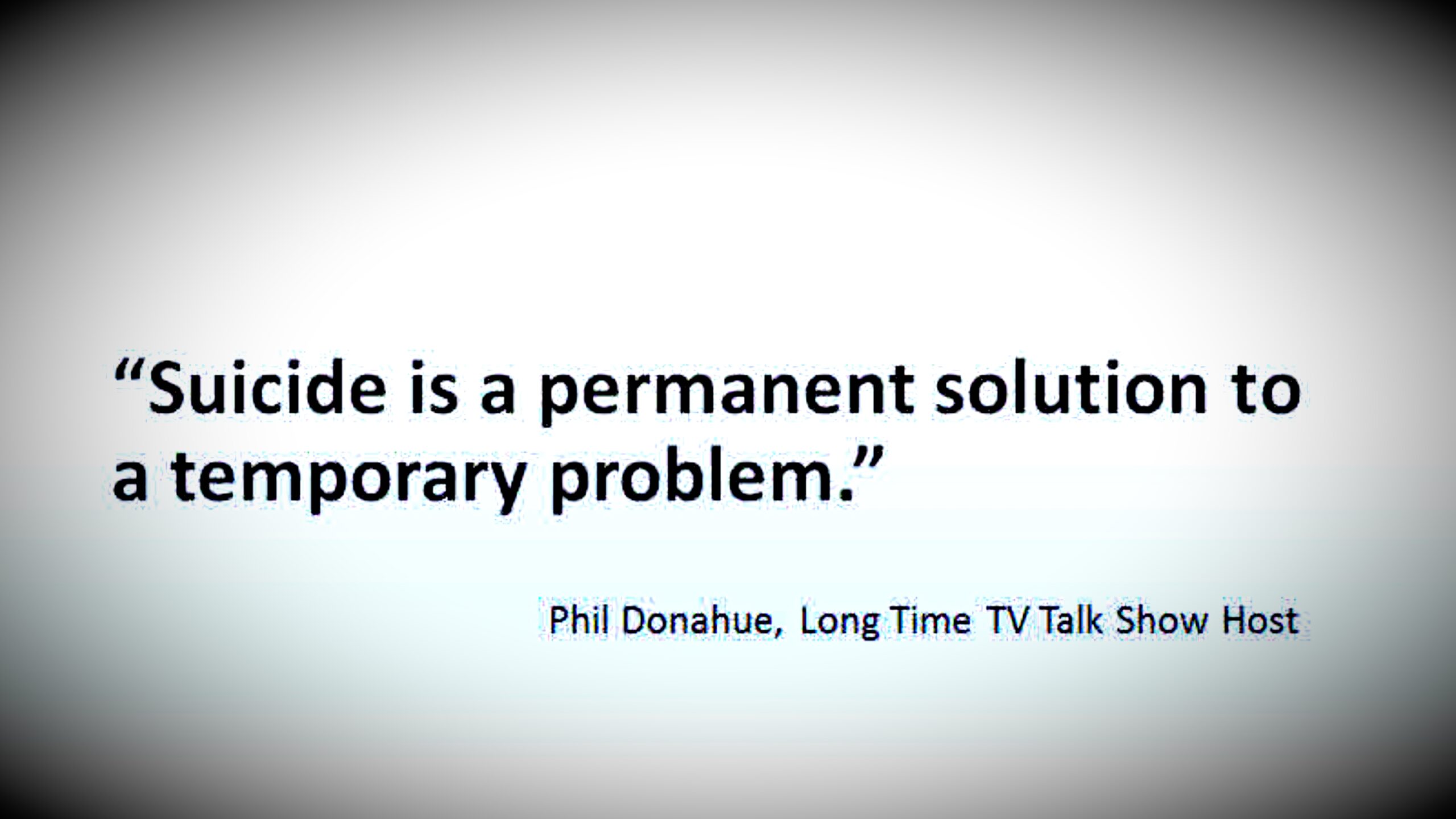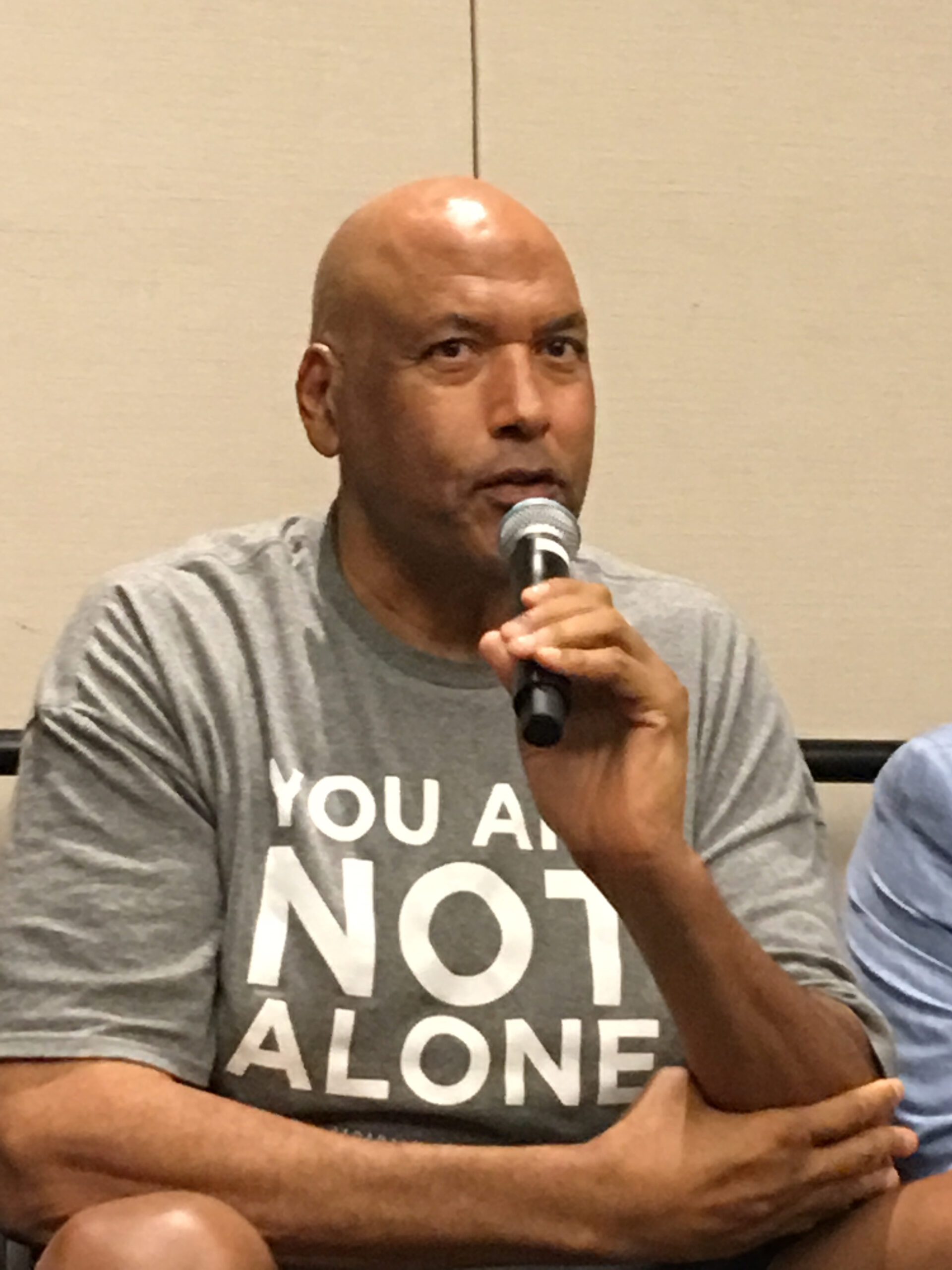
James Donaldson notes: I am turning more and more of my time and efforts towards mental health issues, especially pertaining to our young people and student-athletes.
Having gone through a recent bout of depression and suicidal thoughts myself, I realize now, that I can make a huge difference in the lives of so many by sharing my story, and by sharing various resources I come across as I work in this space. http://bit.ly/JamesMentalHealthArticle
Suicide may be the cruelest death of all. It leaves loved ones and friends wondering what they could have — should have — done to help the person who took his or her own life.
Illnesses, of course, can be predictors of eventual outcomes, although we never are prepared when the end comes. Accidents and murders are painful, but we are hopeful the victims did not suffer.
With suicide, though, the suffering for the individual comes before the shattering end. And that suffering so often is done quietly, unnoticed by those around them.
There probably isn’t a person in this country who has not been affected by the suicide of a loved one, a friend or a coworker. Here at The Eagle, we have been touched twice and the effects of those tragedies linger years later.
In recent months we were shocked by the high-profile suicides of designer Kate Spade and international foodie Anthony Bourdain. Their devoted fans were stunned and left wondering why, although we learned after that Spade had been suffering depression for some time.
Most suicides are not high profile, though. Most are the husbands and wives, sons and daughter, brothers and sisters of people from all walks of living, people who are shattered by their loss. Some never saw it coming. Others are aware of problems but didn’t think they were bad enough to lead to suicide. Others tried desperately to get help for their loved one, their friend.
Suicide statistics are sobering. It is the 10th leading cause of death in the United States, with almost 45,000 such deaths recorded annually. For every suicide, another 25 people attempt to take their life.
Sadly, we are seeing the suicide rate among our young people rise. We lose to suicide more than 118 young Americans between the ages of 10 and 24 — each week. Since 2006, the number of suicides of young people between the ages of 10 and 14 — that’s right, 10 and 14 — had more than doubled.
In fact, suicide is the leading cause of preventable death for people 24 and younger.
What can we do to prevent suicide? First, we have to be aware of those we care for, work with, go to school with and not be afraid to intervene if we suspect that person is contemplating suicide.
Seventy percent of people who consider suicide confide in someone or show signs.
Some of the signs of trouble reported by the National Institute of Mental Health include:
• Talking about wanting to die or wanting to kill themselves
• Talking about feeling empty, hopeless, or having no reason to live
• Making a plan or looking for a way to kill themselves, such as searching online, stockpiling pills, or buying a gun
• Talking about great guilt or shame
• Talking about feeling trapped or feeling that there are no solutions
Feeling unbearable pain (emotional pain or physical pain)
• Talking about being a burden to others
• Using alcohol or drugs more often
• Acting anxious or agitated
• Withdrawing from family and friends
• Changing eating and/or sleeping habits
• Showing rage or talking about seeking revenge
• Taking great risks that could lead to death, such as driving extremely fast
• Talking or thinking about death often
• Displaying extreme mood swings, suddenly changing from very sad to very calm or happy
• Giving away important possessions
• Saying goodbye to friends and family
• Putting affairs in order, making a will.
There are other signs, too. And, those considering suicide may not show any of these signs. We have to pay attention to each other.
Nine out 10 people who take their life have mental disorders, many, if not most, of them untreated. Here are some risk factors:
• Depression, other mental disorders, or substance abuse disorder
• Certain medical conditions
• Chronic pain
• A prior suicide attempt
• Family history of a mental disorder or substance abuse
• Family history of suicide
• Family violence, including physical or sexual abuse
• Having guns or other firearms in the home
• Having recently been released from prison or jail
• Being exposed to others’ suicidal behavior, such as that of family members, peers, or celebrities.
If you suspect someone is contemplating suicide, help is available. If you feel action is imminent, call 911. Call the National Suicide Prevention Lifeline at 1-800-273-TALK (1-800-273-8255).
Most of all talk the person. Don’t accuse, don’t threaten. Ask questions and pay attention to the responses.
Suicide can be prevented, but only if we act. Don’t wait until all that is left is why.



